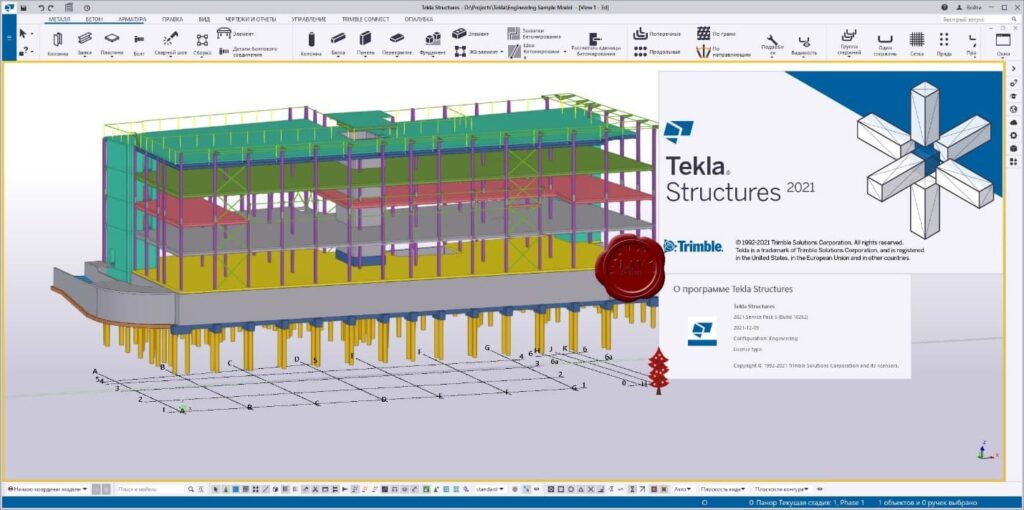A major digital transformation is taking place in both the building and design industries, and BIM software is at the center of it. Experts in architecture, engineering, and construction (AEC) are using advanced BIM tools in 2025 to save time, collaborate more effectively, avoid mistakes, and meet all goals with accuracy.
Because innovation is speeding up, companies must choose from a rising number of BIM programs that each have various abilities for designing, building models, controlling projects, and analyzing them. Choosing a leading BIM software provider, whichever your size, can have a positive and long-lasting effect on your projects.
This blog will highlight the top 10 BIM modeling software platforms available in 2025, covering their most important benefits, costs, and best reasons to use them. We will also share the best BIM software comparison globally to ensure you select the right BIM program for your team, project, and needs.
What Is BIM Software?
Using building information modeling software, professionals can digitally create, oversee, and swap 3D models of projects from their first planning stages through to construction and beyond. Such platforms aren’t limited to creating models; they are also used for assembling all building information, such as how components are arranged, which materials are needed, when the building will be finished, and how it will be managed.
One reason why BIM software is important in the AEC industry is that it unites architecture, engineering, mechanical, and electrical systems, and construction into one place inside a central digital platform
Top 10 BIM Software Tools in 2025
With the progress of the AEC industry, the requirement for more efficient and current BIM software keeps growing. Listed below are the 10 leading BIM software tools of 2025, each with special benefits linked to the job’s complexity, team members, the need for collaboration, and the designer’s needs. The information in this article comes from our research and compares the top building information modeling software globally.

1. Autodesk Revit
Revit maintains its position as the leading software for building information modeling. Revit supplies project designers with strong tools for architecture, structural engineering, MEP, and construction, all connected. Since it supports in-depth parametric modeling, it also saves time by automatically creating documentation for teams in charge of highly complex projects.
- Key Features: 3D modeling, clash detection, BIM 360 cloud collaboration
- Pros: Deep interoperability, rich ecosystem of plugins
- Best For: Large firms and multidisciplinary teams
- Verdict: A gold standard in BIM software and part of almost every best BIM software list worldwide
2. Graphisoft Archicad
This tool is popular with architects because it is powerful, user-friendly, and efficient. A project manager or architect can switch between drafting and modeling on any model or project. Due to its user-friendly interface, it’s the first choice for creative professionals who want to work with flexible BIM systems.
- Key Features: Integrated rendering, teamwork features, real-time updates
- Pros: Faster learning curve, supports both Mac and Windows
- Best For: Design-focused architecture studios
- Verdict: An excellent choice in the best BIM software category for architects
3. Bentley OpenBuildings Designer
Bentley Systems designed this BIM modeling software specifically for use on major infrastructure and commercial assignments. It offers far more than design alone by also allowing performance to be simulated and checked.
- Key Features: Energy analysis, mechanical system design, IFC support
- Pros: Strong for infrastructure and government projects
- Best For: Engineering-heavy and infrastructure projects
- Verdict: Ideal for users who need complex building information modeling programs
4. Trimble Tekla Structures
Tekla is highly respected for its accuracy in structural detailing and steel modeling. It’s widely used for large-scale fabrication and construction planning, offering precise BIM software tools for structural engineering.
- Key Features: Steel connection modeling, rebar detailing, construction sequencing
- Pros: Excellent for fabrication-level accuracy
- Best For: Structural engineers and fabricators
- Verdict: A specialized BIM software leader in structural workflows

5. Vectorworks Architect
Combining creativity with performance, Vectorworks Architect empowers users with parametric design capabilities, landscape modeling, and BIM support—all in one environment.
- Key Features: Flexible modeling, site planning, multi-platform support
- Pros: Great for smaller firms and creative professionals
- Best For: Architects who want more design freedom
- Verdict: A unique player in the best BIM software worldwide conversation
6. Allplan
Developed in Germany, Allplan is a comprehensive building information modeling software that supports architectural, structural, and civil engineering design. It features strong data integration and robust detailing tools.
- Key Features: Multi-disciplinary workflows, advanced detailing
- Pros: High-quality output, IFC-certified
- Best For: European markets and collaborative workflows
- Verdict: A rising name in the best BIM software comparison worldwide
7. BricsCAD BIM
BricsCAD BIM offers a flexible modeling approach, allowing users to create intuitive building designs while keeping a familiar CAD-like interface. It’s cost-effective and efficient, making it ideal for firms transitioning from 2D drafting to BIM tools.
- Key Features: AI-driven modeling, CAD compatibility
- Pros: Perpetual license option, affordable pricing
- Best For: Small-to-medium firms upgrading from CAD
- Verdict: A versatile solution among emerging BIM software
8. Dassault Systèmes CATIA for AEC
Originally designed for aerospace, CATIA has been adapted for AEC professionals requiring high-level 3D parametric modeling. Its advanced simulation features make it unique in the BIM software market.
- Key Features: Performance modeling, parametric control
- Pros: Ideal for mega projects and complex geometry
- Best For: Complex infrastructure, stadiums, high-tech design
- Verdict: A powerhouse when architecture for software meets engineering precision
9. Soft Plan
Soft Plan is one of the most accessible residential-focused building information modeling programs. It combines traditional CAD features with true BIM functionality, offering automatic materials lists, 3D renderings, and energy analysis.
- Key Features: Material takeoffs, residential design templates
- Pros: Beginner-friendly, focused on homebuilding
- Best For: Residential designers and small builders
- Verdict: A niche but essential BIM modeling software for housing professionals
10. BIMTrack
BIMTrack is not a standalone modeling platform, but a powerful cloud-based coordination tool that integrates with other BIM tools like Revit, Navisworks, Archicad, and Tekla. It centralizes issue tracking, communication, and model-based coordination.
- Key Features: Cloud issue management, model navigation, cross-platform compatibility
- Pros: Enhances collaboration across teams and platforms
- Best For: Project coordinators and BIM managers
- Verdict: A must-have companion to your core BIM software
Conclusion
You can see from a worldwide comparison of BIM software that both giants and specialist tools like Soft Plan and BIMTrack are just right for different projects.
No matter if your need is in design, building, or managing a project, the correct BIM software can greatly increase your productivity, decrease cost, and ensure great results. Now that the industry is using technology, data, and artificial intelligence, buying the correct building information modeling software has become essential.





